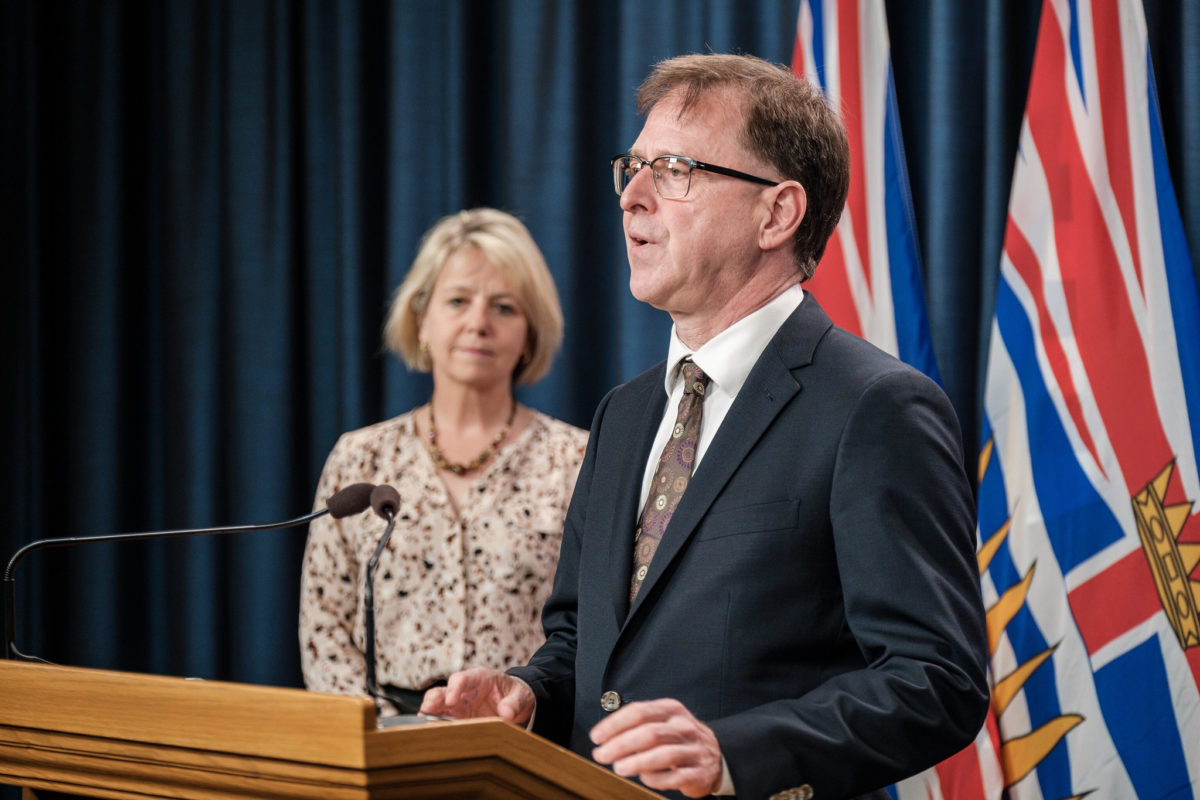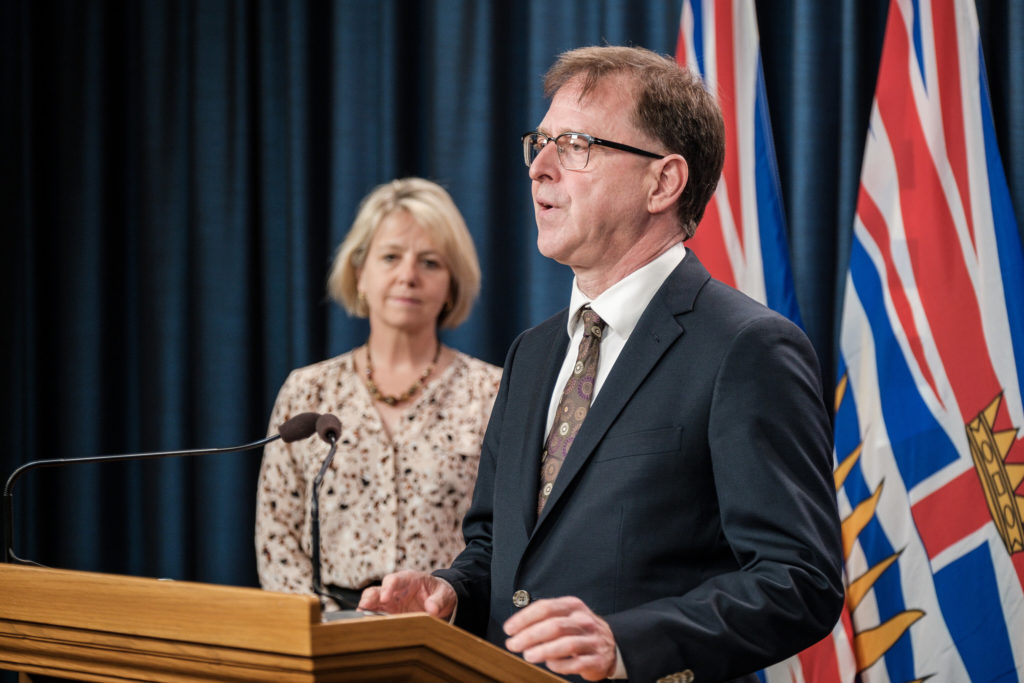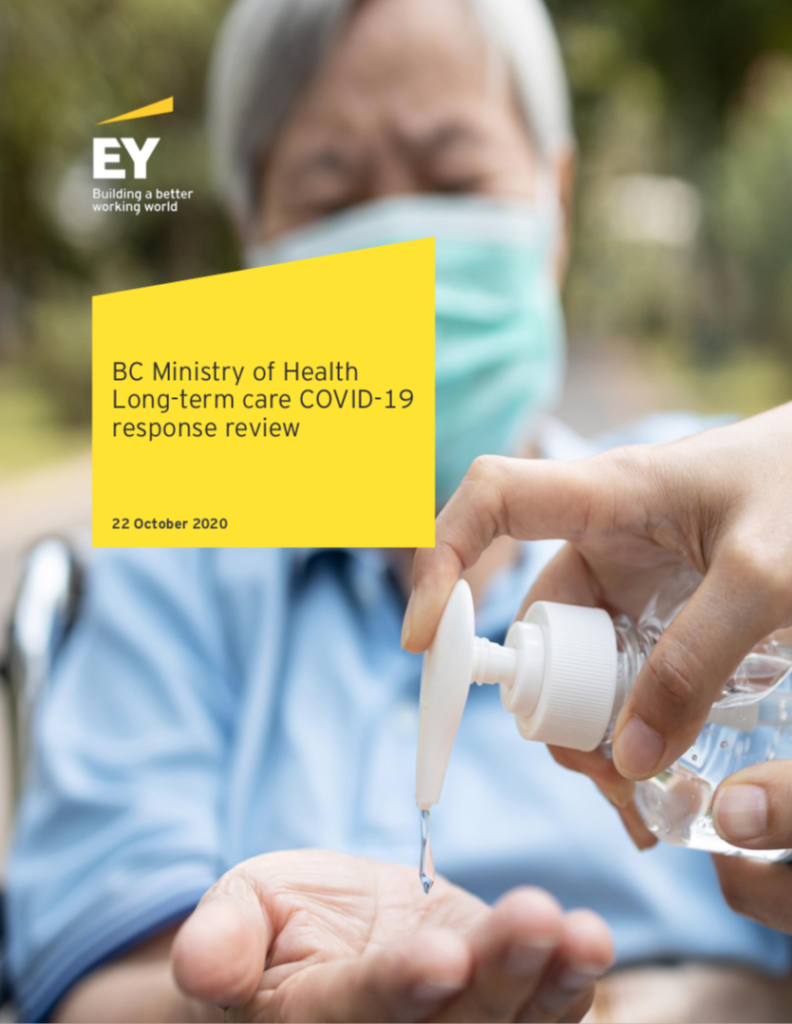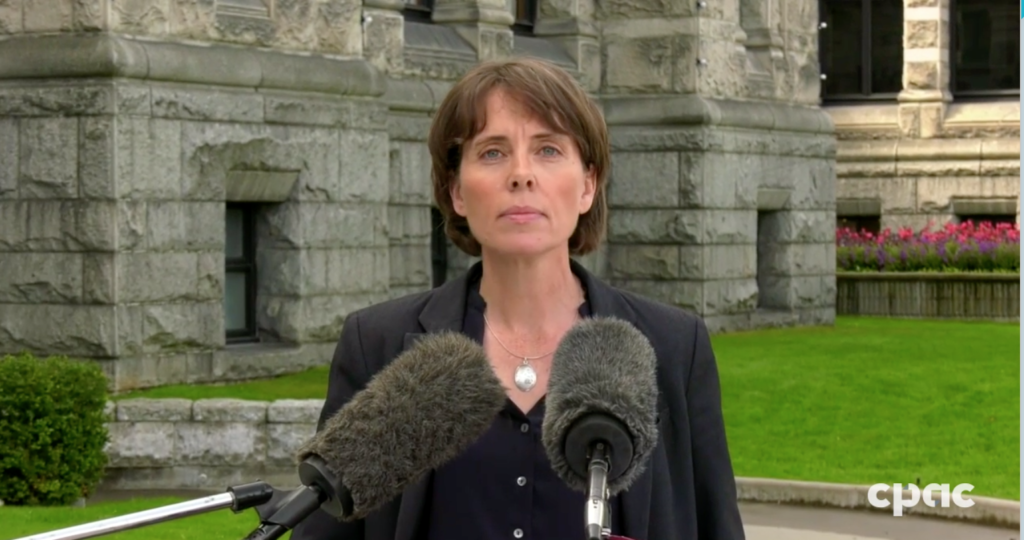
Bob Mackin
Deputy Minister of Health Stephen Brown and Provincial Health Officer Dr. Bonnie Henry delivered a pandemic update to BC Green Party staff on the same day Ernst and Young completed a $197,000 review of long term care.

Adrian Dix (right) and Dr. Bonnie Henry (BC Gov)
But the party’s leader said officials made no mention of the Oct. 22 report, which was kept secret until this week — three months after the NDP won the Oct. 24 snap election.
“I find it very concerning that this report was withheld during a critical and evolving public health emergency,” said BC Greens leader Sonia Furstenau. “Information is not a ‘nice to have’ during a pandemic, it is a core aspect of the government’s responsibility to the public. There are issues highlighted in this report — from the disjointed communications to the limited access to PPE for certain homes — that are incredibly important, requiring immediate action so we can ensure the safety of our elders and their caretakers.”
Had the finished report or even a draft been leaked, it could have been an October surprise and changed the course of an election campaign that was not required by law until October 2021.
The report, titled B.C. Ministry of Health Long-term care COVID-19 response review, said emergency coordination decisions were sometimes made in silos, health authority-owned seniors care homes got priority over private and affiliate sites, and provincial health orders were sometimes interpreted differently by various medical health officers. Around two-thirds of B.C.’s 1,168 coronavirus deaths are connected to long term care.
The NDP government did not acknowledge the existence of the report until reporters from CTV and the Vancouver Sun interviewed some of the review participants.

Cover of the Oct. 22, 2020 Ernst and Young report hidden for three months after the election (BC Gov)
The NDP government cancelled the scheduled Jan. 21 pandemic briefing rather than take questions about the growing controversy.
At a Jan. 22 briefing on the vaccine rollout, Health Minister Adrian Dix downplayed Ernst and Young’s work as a “minor report designed to assist ministry staff in addressing issues” and said the result was “favourable to the performance of the government in the first phase” of the pandemic.
Dix vaguely said the report was prepared in the “end of October, beginning of November.” But the cover and metadata both show it was completed two days before the Oct. 24 election day.
The report said one unnamed Health Authority “provided personal protective equipment to private providers with three days notice, where others only provided supplies to Health Authority owned and operated facilities. This discrepancy was later resolved through coordinated central supply chain access.
“Messaging and communication was sometimes inconsistent across HA owned and operated versus private and affiliates, which caused confusion and led to inconsistent practices from staff and providers.”
The report said there were gaps in provincial PPE supply and oversight and a lack in centralized supply coordination caused delays. Private and affiliate care operators were left to source their own PPE supplies through non-traditional suppliers, such as hardware stores, counterfeiters, private individuals and private manufacturers.
“Procured supplies sometimes did not meet clinical safety standards due to gaps in infection prevention and control knowledge,” the report said.
The report recommended Provincial Health Services Authority “create a centralized repository of emergency stock for pandemic supply of PPE which would allow for full oversight across the system to mitigate any challenges for HA or operators to obtain supply in an emergency or pandemic response.”

Green leader Sonia Furstenau (CPAC)
theBreaker.news reported in July 2020 that B.C. ended 2019 behind the eight-ball. Medical equipment stockpiles held by the five regional health authorities worth $5.7 million in 2013 were allowed to dwindle to $2.07 million. Masks, gloves, goggles, gowns and sanitizer had expired or not been replenished. Officials suddenly decided to play catch-up in early February 2020 as global demand forced prices to record highs.
Restrictions on visitors and outings helped reduce infections, but the precautions harmed residents’ autonomy, mental health and wellbeing. Staff stress, anxiety and burnout led to staff shortages. The single-site staffing order, which was supposed to stop facility to facility transmission of the virus, was not enforced.
“The single site staffing order did not restrict staff from working in acute care or other occupational settings (i.e. other care homes or non-care related organizations),” the report said. “This sometimes caused discomfort for staff and operators, who were concerned that staff working in other settings could be a source of infection.”
Furstenau said the report’s delay is the latest case of damage to the public trust.
“The snap election on the eve of the second wave, the cancellation of the full fall legislative sitting, the delay of the spring sitting, the reduced media availabilities are all resulting in reduced transparency and accountability from government. Trust and buy-in from the public cannot be taken for granted. It requires constant honesty and information.”
The EY report was released almost a week after B.C.’s Auditor General slammed the Ministry of Health and four other ministries for mismanaging IT assets in a report that was completed in November.
Auditor General Michael Pickup and his staff looked at the Ministry’s IT services branch, business management office, health information privacy, security and legislation branch, data management stewardships branch, HealthLinkBC and Vital Statistics Agency.
He found the Ministry failed to maintain an inventory of physical devices and systems, has not maintained an inventory of software platforms and applications, did not maintain an inventory of information systems used in business operations or prioritize IT assets based on classification, criticality and business value.
Support theBreaker.news for as low as $2 a month on Patreon. Find out how. Click here.











